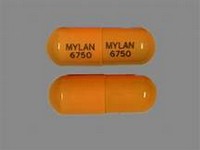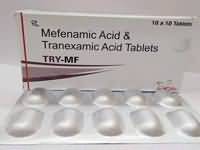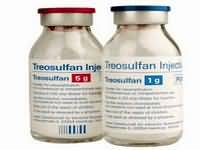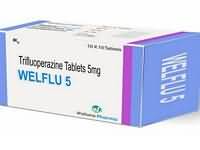Balsalazide sodium

Balsalazide sodium
CLINICAL USE
Treatment, and maintenance of remission, in mild to moderate ulcerative colitis
DOSE IN NORMAL RENAL FUNCTION
Acute treatment: 2.25 g, 3 times a dayMaintenance: 1.5 g twice daily, maximum 6 g/day
PHARMACOKINETICS
Molecular weight :437.3 %Protein binding :40 (similar to mesalazine), (NASA – 80%) %Excreted unchanged in urine : 25 (as metabolites) Volume of distribution (L/kg) :No datahalf-life – normal/ESRD (hrs) :No data (T½ NASA = 6–9) DOSE IN RENAL IMPAIRMENT
GFR (mL/MIN)
20 to 50 : Dose as in normal renal function 10 to 20 : Use with caution and only if necessary <10 : Start with low doses and monitor closely DOSE IN PATIENTS UNDERGOING RENAL REPLACEMENT THERAPIES
CAPD :Unlikely to be dialysed. Dose as in GFR <10 mL/min HD :Unlikely to be dialysed. Dose as in GFR <10 mL/minHDF/high flux :Unlikely to be dialysed. Dose as in GFR <10 mL/minCAV/VVHD :Unknown dialysability. Dose as in GFR 10 to 20 mL/min IMPORTANT DRUG INTERACTIONS
Potentially hazardous interactions with other drugsNone known ADMINISTRATION
Reconstition
– Route
Oral Rate of Administration
–Comments
– OTHER INFORMATION
Balsalazide is a prodrug of mesalazine (5-amino-salicylic acid)Mesalazine is best avoided in patients with established renal impairment, but if necessary should be used with caution and the patient carefully monitoredSerious blood dyscrasias have been reported with mesalazine – monitor full blood count closely
See how to identify renal failure stages according to GFR calculation
See how to diagnose irreversible renal disease
Home









